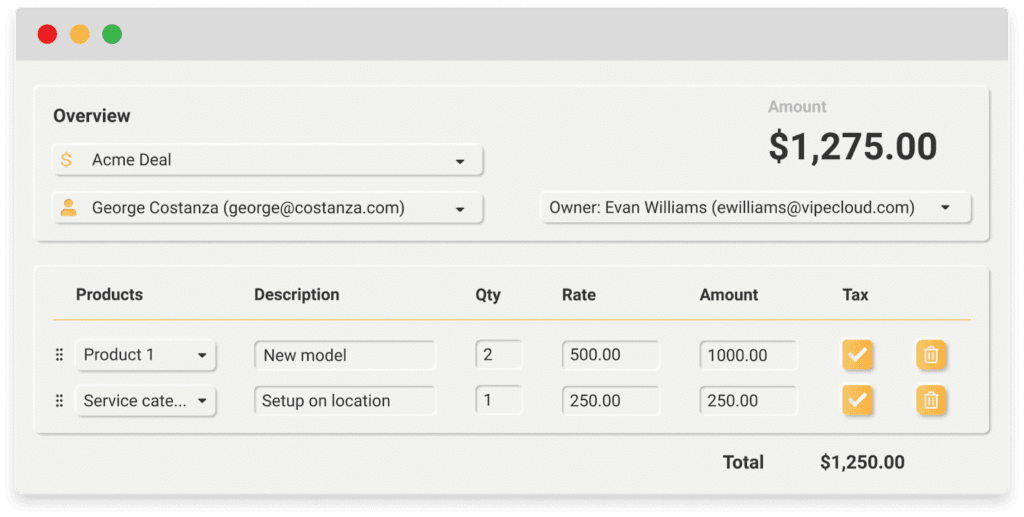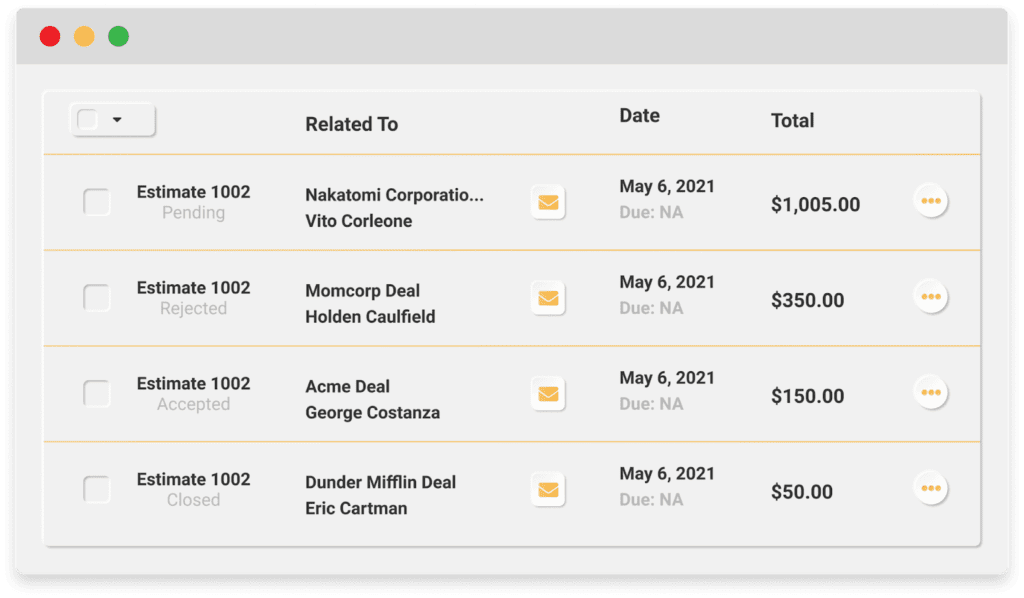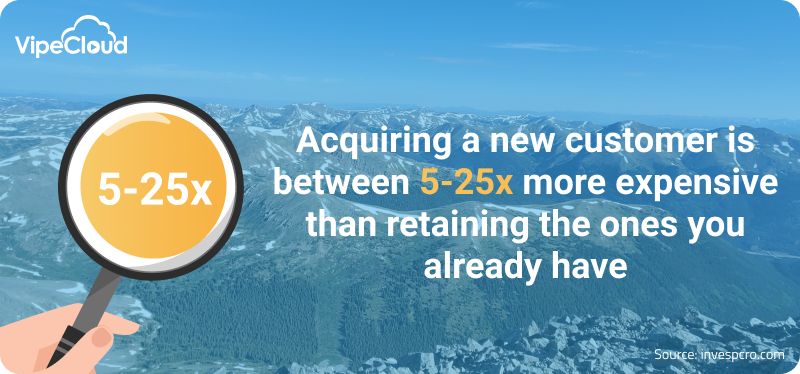Last updated on August 9th, 2023

Today you’ll learn how to create a sales proposal that shows the value of your offer and generates closed deals!
When selling a product or service, it’s very natural for prospects to ask questions in order to figure out if it’s right for them.
And chances are there’ll be more crucial questions after your meeting — especially if they consulted with friends, business partners, or mentors.
It has to be easy for prospects to find the answer to these inquiries, otherwise you may lose the deal.
Sales proposals are your ticket to closing new business because they educate the prospect and show the value of your product in a shareable format.
You’ll learn:
- What Is The Purpose Of A Sales Proposal?
- How Do You Write A Sales Proposal?: The 9-Step Formula
- What Makes A Good Sales Proposal?
- The Do’s & Don’ts Of Sales Proposals
- What To Do After Sending A Proposal
- The Key Systems That Benefit Your Proposals

VipeCloud is the only Automation tool your small business needs to
be the hero to your customers.
With Email, Texting, Social, Suites, Chat, Stories, Video Email & Sign Up Forms fully built-in, we provide you with the perfect platform to grow your business.
15 Day Free Trial – Get started risk free. No CC needed.
What Is The Purpose Of A Sales Proposal?
A sales proposal is a record that offers a solution to a prospect’s specific problem.
Usually sent after an initial conversation or two, it’s a powerful tool that clearly outlines the problem, the solution, and the value of your product!
With sales proposals, you’re showing that you understand what the client needs in a way that makes you stand out from your competitors.
Because the truth is prospects “shop around,” and if you’re not standing out…
You’re pretty much sending your competitors revenue!
Proposals also allow prospects to review what you’ve told them, which lessens confusion on your product, invites them to ask follow-up questions — or allows them to take action.
When you think of the phrase “sales proposal,” you should think about “value” rather than “selling.”
Showing value allows prospects to have more buy-in because whether it’s B2B or B2C, people buy things they find valuable!
How Do You Write A Sales Proposal?: The 9-Step Formula

1. It All Starts With The Discovery
Before jumping into sales proposal templates and building a proposal with the bells and whistles, you must run the discovery phase.
Why?
You can’t present your proposal as the solution to their problems unless you fully understand their problems and goals.
Discovery conversations give you a chance to learn more about your prospect in order to craft a tailored solution to their problem.
Think about it:
Restaurants take your order, then give you what you want on a silver platter.
Also, surgeons don’t just begin operating on you — they ask you questions about your injury, your symptoms, look at your medical history, and run tests.
This initial conversation is all about asking critical questions that’ll give you nuanced information — just like a surgeon. (Because every prospect has specific challenges.)
The answers the prospect gives to your questions should be written down so you can incorporate them into your proposal.
When it comes to questions, it’s a good idea to base them around the BANT sales model.
BANT stands for:
- Budget
- Authority
- Need
- Timeline
Your questions should center around these pillars because they are the 4 main ingredients to qualifying prospects and closing them on a deal.
These 4 pillars are huge factors whether someone buys or doesn’t.
The answers to these questions will be the catalyst that tells you whether this is a sales qualified lead, and if they are then — it’s proposal time!
Here are some example questions that center around each part of BANT:
1. Budget – What’s the range you’re willing to invest for a solution to this problem?
2. Authority – Is there anyone else involved in your company’s decision-making process?
3. Need – What problem are you looking to solve and why?
4. Timeline – When are you willing to begin fixing this problem?
2. Creating Your Solution
Now that you understand your prospect’s needs more, it’s now time to form a tailored solution to it.
At this point, it should be clear that the prospect is a sales-qualified lead to ensure you’re not wasting time making a proposal for someone that’s unqualified.
When it comes to solving business problems, you should use solutions that you’re knowledgeable about and that have shown a proven track record (whether it be within your company or industry at large).
You can also think of any past or present customers with a similar pain point to help you develop a sound solution.
Creating the solution is what will give your prospect that “sigh of relief” because they finally have a chance to solve a significant roadblock.
The true purpose of sales should be actually solving pain points — not selling snake oil.
Remember, having a solution is just the first step — we have to now craft the proposal and show the value (end-result) of the solution.
3. Use A Sales Proposal Template
You want to jot down essential information related to your deal and make a rough outline of your sales proposal. This ensures that everything is included.
When it’s time to make the proposal, there’s a sea of amazing templates you can utilize!
Here are 2 awesome sales proposal software with strong templates:
- Betterproposals.io
- PandaDoc
Sales proposal templates give you a framework to get some ideas flowing. What’s great is that you can save completed proposals as custom templates for your future customers, making crafting a proposal a bit faster.
This is great for your sales team because it brings efficiency.
4. The Executive Summary
Start your proposal off by mentioning the client’s problem specifically, then talk about how you can solve this problem.
This is known as the executive summary.
It should be written professionally and in a way your prospect can understand. Think of the executive summary as an intro sales proposal letter or “cover letter” to the rest of your sales proposal.
The executive summary typically goes at the very beginning of your proposal.
5. Going into detail about your solution
Next, you want to talk about the details and specifics of your solution:
- What value will your solution bring?
- How does it work?
- Why does it work?
- How long until it fixes the pain point?
When your prospect reads the details relating to the solution, there’s more intrigue because they can picture themselves going through the solution steps you’ve outlined.
It’s great to show similar customers, past or present, with the same problem you helped solve. It will add more trust in your company and your solution as a whole because you’re providing social proof.
55% of buyers believe customer reviews are critical in their buying decision.
This makes customer testimonials a crucial part of your sales proposal!
As mentioned earlier, talk about the timetables and milestones that you’re looking to reach.
A good example would be a marketing agency that estimates the range of leads their client can expect month-to-month. The first month the agency could be testing out different ads that bring just 30-40 leads, but the second month they could bring in 40-65 since they know what campaigns work.
6. Pricing Options
If your solution can have multiple tiers, this is a great time to give your customer pricing options.
Why are pricing options important?
It allows your potential customer more leeway and a higher likelihood of buying. You can tier your prices like this:
- Basic package
- Standard package
- Premium package
Tiered pricing models are especially significant if your business sells software like SaaS seats, websites, widgets, etc.
You can add discounts as your pricing level goes up to incentivize customers to select higher options.
When setting up your pricing, you want to revisit your customer’s budget (Going back to BANT).
7. Adding Your Call-To-Action
End your proposal with a way for your prospect to take action.
For example, this can be telling them “sign below to begin services” once they’re at the end of the proposal.
The truth is even the “simplest” sales proposals have a lot of information. So clearly telling the customer what to do next at the end of it is crucial.
A streamlined sales process is all about removing as much friction from the discovery call to the close as possible, making CTA a cornerstone of closing.
8. Have Your Quote Ready With CPQ Software
This is important!
When your customer is ready to work with you, you must have a method of creating a fast quote.
No matter what combinations of solutions your customer chooses, use CPQ software (configure, price, quote) to automate and streamline your quotes!

VipeCloud’s Estimates is a CPQ system that lets you pick your product solutions, price them accurately (discounts, taxes, etc.), and send them to your customer.

This removes so much friction that the typical salesperson faces when manually sending quotes.
You’ll also track how your prospect engaged with your quote (opens, accepts, etc.).
CPQ helps you not fumble deals, and here’s why:
You shorten the time between when your proposal and when they receive your quote.
This is a crucial step in the sales process that many sales teams fall short of, especially when creating manual price quotes.
From pricing errors, selling old products, and taking a long time to create a quote, manual quoting should be systemized using a CPQ software.
With this speed, your sales team is more efficient.
9. Polish Your Proposal
“Polsihing yur proposal is important!”
Reading typos like that isn’t fun for you, and neither is it for your prospect.
Proofreading is essential in your proposal since it ensures you are using good grammar and solid wording.
Polishing your proposal doesn’t just end there — you also want to format your proposal making sure things are aligned (images, paragraphs, etc.).
A great majority of polished proposals are also simple and somewhat scannable, allowing for key information to stand out.
When it comes to making something easy to read, do the following:
- Breaking up your text into smaller paragraphs and bullet points so that it’s easy to skim.
- Keeping your layout uncluttered and straightforward, having a good amount of white space.
- Align your text to the left, making it easier to read (readers sometimes overlook titles that are centered.)
The Do’s & Don’ts Of Sales Proposals
After understanding each step of the sales proposal process, it’s essential to understand some do’s and don’ts.
These are practices to do and practices to avoid entirely:
- Do make it personalized – Sending generic sales proposals won’t be effective since it’s not specific to the prospect.
- Don’t send a proposal and not follow up – Following up is what wins deals! (VipeCloud helps you template great emails for follow-up and allows you to set up key automation.)
- Do have a thorough conversation first before sending a proposal – Even if they insist on a proposal before speaking, the conversation has to be at the forefront for you to qualify them and craft a specific solution.
- Don’t forget about your CRM – Make sure all sales activity is updated on your CRM for each lead you’re speaking to.
- Do speak like your prospect – In your proposal, use words they use and key phrases in their industry to create a connection with them throughout the proposal.
- Don’t overly speak about your company – A sales proposal is about the customer, the main focus should be them, the solution, the value of your solution, and the outcome.
- Do be clear on the next steps after they sign with you – This will allow your prospect to prepare any necessary information you’ll need in a timely manner.
What Makes A Sales Proposal Great?

What makes a sales proposal great is how well you convey that you understand your prospect’s problem and how well you convey your solution in a way that makes sense to them.
It has to make sense in their mind that you, your business, and your product is the perfect fit for them.
For this to happen, you have to build the value of achieving the intended goal.
This means having your prospect envision solving their problem and how much of a priority it is. From there, you position your product as the vehicle to that end goal.
For example, Company A is selling a new office space to Company B.
Company B mentions how they’re expanding, and their current office is too cramped for the number of employees and departments they have.
In the proposal, Company A should speak about how a bigger office will end the cramped madness.
Company A can then discuss how their office spaces are the best fit for them and show successful testimonials.
All of this contributes to Company B seeing more value in the product (new office space) and end goal.
Thus, they’ll likely see Company A as their best option!
What Should You Do After Sending A Proposal?

1. Track Your Prospect’s Engagement
Track how they’ve engaged with your proposal to create a personalized follow-up. (Sales proposal software lets you find this easily through a dashboard.)
It’s great to have templated emails for specific actions after specific days.
For example, you could have a follow up for:
- Opens but no signature
- Signature but no deposit
- Next Steps after signing on
Having pre-planned emails will help your sales team remain consistent while also saving time.
2. Create Your Quote & Send It
After your prospect chooses a particular pricing tier or solution package, you want to create your quote and send it.
Send your quotes with CPQ software (as discussed earlier) so your prospects get the accurate total as soon as possible.
This method of quoting is also very scalable, meaning you won’t run into slowdowns as you take on more and more leads.
3. Start Your Onboarding Process
Once everything is signed, start your onboarding process or service.
Maybe this is an introduction demo to your product, an onboarding form for your services, or a kick-off call.
Whatever the case, you want to tell your new client about what they can expect next, even if you already mentioned it in the proposal.
Onboarding is crucial because it’s the first impression they’re getting about your business as a client.
The last thing you want is to lose a new customer because they don’t know or forget how your product works or what your service accomplishes!
This is all about the customer experience, which is key because the happier you keep your customers, the longer they’re likely to work with you.
Keep in mind:
Acquiring a new customer is between 5-25X more expensive than retaining the ones you already have!

The Key Systems That Benefit Your Proposals
Sales proposals are a great tool for closing deals because they incorporate things customers are looking for before buying. (Details, social proof, solutions, pricing, etc.)
As your business scales, you’ll need to manage the volume of incoming prospects with efficiency.
Best way to do it?
Is by using a CRM built for closing new business, follow-up tools & a CPQ system built to send your quotes with speed.
All 3 of these are included in VipeCloud’s Marketing & Sales Suite!

Try it today free for 15-days — no card required.
If you’d like to schedule a demo, you can request one here!
Sales Proposal FAQ
A sales proposal template is a document that explains how your product or service works to fulfill your client’s project needs or solve their problems.
A winning sales proposal should include the following sections:
Introduction – overviewing the problem, solution, benefits, and costs.
Issue – the definition of the issue and its importance.
Solution – the definition of the solution and your step-by-step plan to overcome the issue.
Qualifications – overview of the experience and personnel required.
Conclusion of benefits and costs – reinforce your point once again and balance the cost against the benefit.

Leave a Reply